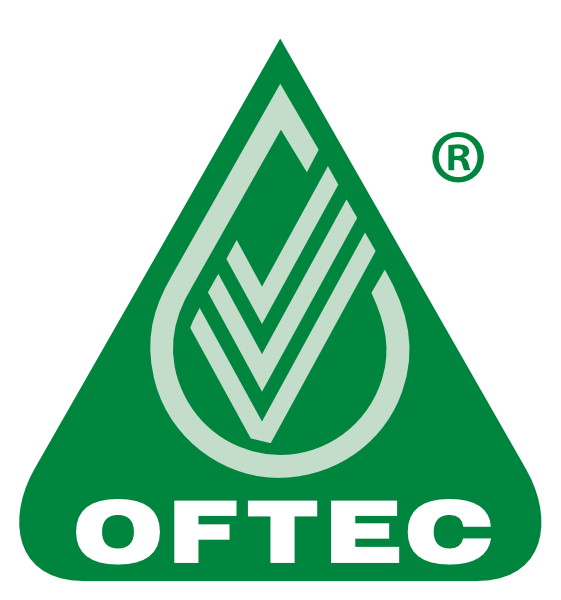Home guide to domestic liquid fuel-fired heating and cooking appliances
The information on this page provides general guidance; your local OFTEC registered technician will be able to provide further advice on your particular circumstances.
In 2021, oil (kerosene) continues to be the most widely used fuel in off-grid homes. However, to reflect that a renewable liquid fuel, such as HVO may soon be available (see our future heating section) we have used the term liquid fuel in this guide to include both oil and low carbon liquid fuels.
This page outlines the wide range of domestic liquid fuel-fired heating and cooking appliances that are currently available and the basic principles governing their use.
Your OFTEC registered technician will be able to offer advice on the type of appliance, location and control system that best suit your needs.
Appliance types
Designed to be strong and long lasting, liquid fuel-fired appliances are some of the most efficient you can get. There’s a huge choice of floor standing or wall mounted appliances for installation inside and outside domestic premises.
Regular boilers are designed to heat water within a heat exchanger by absorbing the heat contained in the flue gases created by the burner.
Sealed system boilers and combination boilers include a circulating pump, expansion vessel and other components needed for a “sealed system” and don’t need an expansion cistern in the loft space.
Both regular and sealed system boilers require a separate hot water cylinder. By contrast,
combination boilers can provide hot water on demand, as well as heating. This saves space because no hot water cylinder is required. However, sufficient water supply pressures and flow rates are required for optimum performance.
Range cookers have been available for many years. Some models have integral boilers making them capable of providing central heating and hot water too.
Room heaters or stoves have decorative effect fires that burn fuel through imitation coals or wood behind a glass front. Some also have back boilers to provide hot water and/or central heating service.
Appliance location
When deciding upon a location for an appliance, the heating system pipework, fuel supply, electrical connections, flue terminating positions and ventilation must all be taken into consideration. It is recommended that balanced flued appliances are used in habitable areas.
Open flued appliances draw air for combustion from the room in which they are fitted. They should not be fitted within, or draw air from, a bedroom, bathroom, garage or bedsitting room.
Modern condensing appliances will emit plume (water vapour along with other by-products of combustion) from the flue; this is most visible on colder days. Extra care needs to be taken when siting a condensing flue to avoid the plume causing nuisance to you or your neighbours.
Garages are often used for siting appliances. To prevent car fumes being drawn into the appliance, a room-sealed, balanced flued appliance should be used so that fresh air for combustion is taken directly from outside via the flue system.
If internal space is at a premium, it is worth considering appliances that are designed to be installed externally or “through the wall”.
Maintenance and safety
Liquid fuel-fired appliances have an excellent safety record. However, it’s worth fitting an audible carbon monoxide alarm as a precaution. To ensure safe and correct operation liquid fuel-fired appliances should be serviced at least annually, or in accordance with the manufacturers’ instructions. It is important that the appliance is easily accessible, and it should never be positioned where a ladder is needed for maintenance. Consumable items such as nozzles, flexible hoses and wicks should generally be replaced at each service. An annual service should include checking the fuel storage tank and associated pipework.
Appliance efficiency
Older appliances are typically around 60-70% efficient. Modern high efficiency condensing appliances are normally more than 90% efficient and are available as regular, system and combination boilers. Installing a condensing appliance is an excellent way to reduce running costs compared with non-condensing types - you could enjoy a fuel saving of up to 30%. To comply with building regulations all new or most replacement boilers must be of the condensing type. Non-condensing boilers can only be fitted if the building qualifies for an exemption which is based upon an assessment of the technical difficulty and cost associated with installing a condensing model.
Systems and controls
Modern high efficiency condensing appliances use an electric pump to circulate the heated water around your heating system. If you have an old heating system or one which doesn’t use a pump to circulate the water, it must usually be upgraded to a fully pumped system when the appliance is replaced.
Accurate system controls can help you save money by reducing heat wastage. For example, by reducing room temperature by 1ºC, you can save up to 10% off your annual fuel bill.
The following websites are a handy source of information on energy saving: www.simpleenergyadvice.org.uk or www.energysavingtrust.org.uk
Minimum system controls should include:
- Room thermostats
- Thermostatic Radiator Valves (TRV’s)
- Cylinder thermostat
- Programmers to set ‘on and off’ time periods
There is a vast selection of modern controls available to achieve compliance with building regulations and increase energy efficiency which will help keep your fuel bills down. It may be possible to fit devices such as weather compensation or smart controls.
Please wait ...



